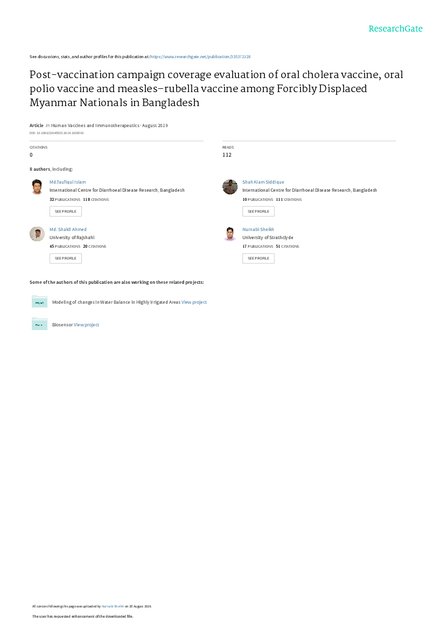
Background: The new influx of Forcibly Displaced Myanmar Nationals (FDMNs) into Bangladesh started in August 2017 through different entry points of Bangladesh. Considering the imminent threat of infectious diseases outbreaks, the Government of Bangladesh (GoB) decided to vaccinate children against three deadly diseases (measles, rubella and poliomyelitis) and oral cholera vaccine (OCV) for all except <1 year children. After completion of the campaigns, post-vaccination campaign evaluation was carried out to assess the coverage of OCV, OPV and MR vaccines during campaigns. Methods: Post-vaccination campaign evaluation was conducted after completion of the 2nd dose of oral cholera vaccine (OCV2) and oral polio vaccine (OPV2) through a cross-sectional survey. The evaluation was conducted in the Balukhali camps under Ukhiya upazilla. Precision-based sample size was calculated to estimate the vaccine coverage. Ninety-two trained interviewers were involved to collect data from the target of approximately 40000 FDMNs between 18 and 25 November 2017. Results: Data were collected from 39,438 FDMNs during the survey period. The highest coverage was observed for OCVs (94% for OCV1 and 92% for OCV2). On the other hand, lower coverage was observed for the other vaccines; the coverage for OPV1, OPV2 and MR were 75%, 88% and 38%, respectively. Unawareness (30.7% did not know about the campaign) was the most notable cause of lowering down MR vaccine coverage. Conclusion: The experience in Bangladesh demonstrates that vaccine campaigns can be successfully implemented as part of a comprehensive response toward disease outbreak among high-risk populations in humanitarian crisis.